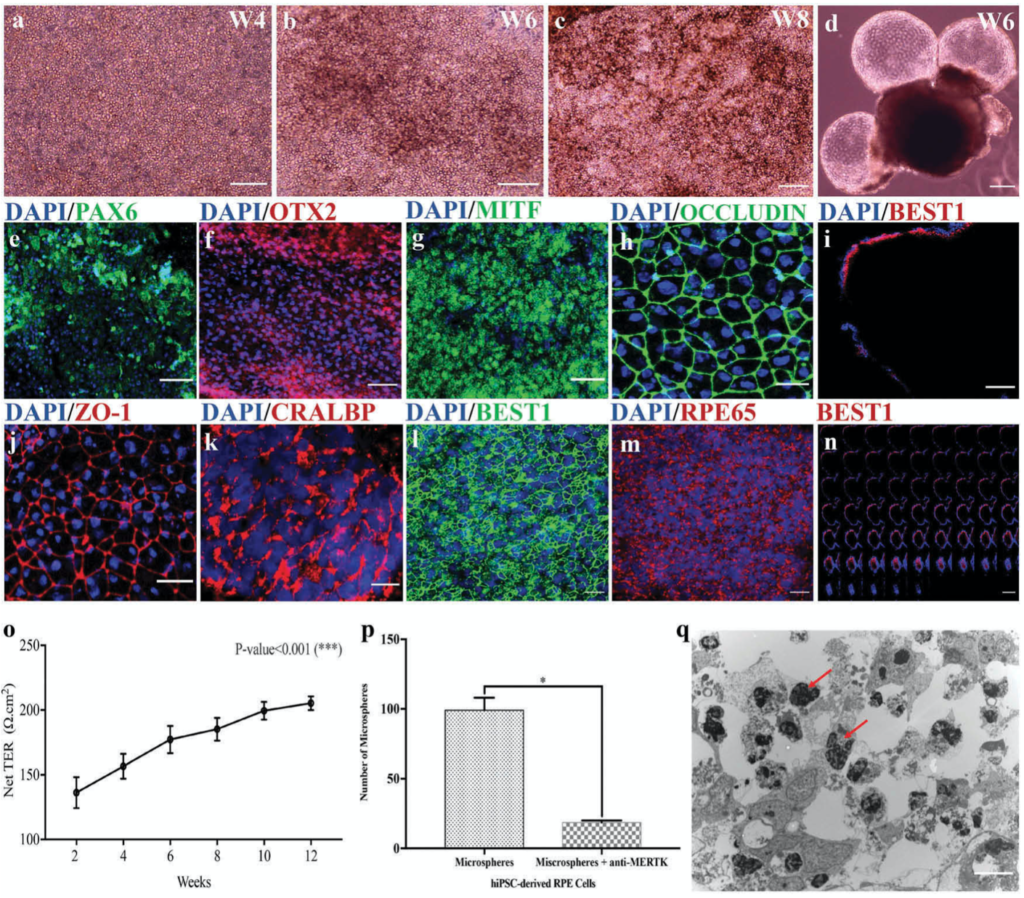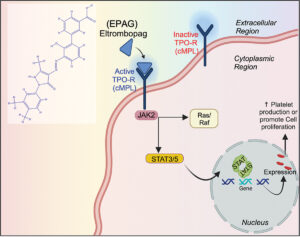Effective differentiation and biological characterization of retinal pigment epithelium derived from human induced pluripotent stem cells

Abstract– Purpose: Human induced pluripotent stem cells (hiPSC)-derived retinal pigment epithelium (RPE) cells are therapeutic cells that have been shown to be promising in the rescue of lost photoreceptors. In this study, we generated hiPSC from human epidermal keratinocytes and subsequently differentiated them into RPE cells to investigate their ability to influence the retinal functions of the Royal College of Surgeon (RCS) rats. Methods: Keratinocytes were reprogrammed to hiPSC using a non-integrating Sendai reprogramming system. Established hiPSCs were differentiated into RPE cells, and complete characterization was performed. Next, the suspension of hiPSC-RPE cells was transplanted into the subretinal space of 3-week-old RCS rats (n = 12). Posttransplantation evaluations were performed using optical coherence tomography (OCT), electroretinography, and immunohistochemical analysis. Results: The hiPSC colonies were identical to embryonic stem-like cells that revealed the expression of pluripotency markers and retention of the normal genome. These cells exhibited the ability to differentiate into an amalgam of germ layers and produce RPE cells. The differentiated RPE cells exhibited an identical pigmented morphology that expressed RPE-specific markers, such as CRALBP, BESTROPHIN, RPE65, and MERTK. At 8 weeks of longitudinal culture, the RPE cells exhibited maximum pigmentation with in vitro phagocytotic activity. Furthermore, transplantation data showed improved retinal function till week 12 post-transplantation and a significantly higher number of rod/cone ratios in transplanted eyes compared to non-surgery control eyes. Conclusion: hiPSC-derived RPE cells exhibited naïve RPE cell properties and functionality that provided trophic support and the transient rescue of photoreceptor cells.





